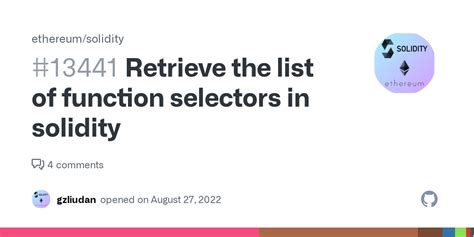ETHEREUM: Return the Transaction Output and Output Pool Addresses
Ethereum provides a robust frame to manage transactions and related wallets. Understanding the input and output wallet addresses of the transaction is essential for various cases of use, such as token treatment, installation of smart contracts and developing a decentralized application (DAPP).
In this article, we examine how to get the wallet addresses from a transaction with Ethereum with built-in APIs and libraries.
Transaction hash
You must first acquire its hash to download the addresses of the transaction input and output wallets. The transaction hash can be found by querying the Ethereum blockchain or using the “Ethers.js” directory. Here’s an example:
`Javascript
Const Ethhers = Requires ('Ethers');
// Get the transaction hash from the blockchain
Async function ghettransectionhash (transaction) {
CONST TX = Waiting for Ethers.gettransection;
return tx.hash;
}
// obtain the addresses of the transaction input and output wallets
Async Function Getwalletaddresses (Hash, Networkname) {
CONST TX = Waiting for Ethers.Providers.estimatgas ({from: '0x ...', to: ...});
if (tx.gaslimit <1000000) {
// Use your local service provider's gas estimation API for small transactions
Return estimates (TX);
} Else {
// Use Ethereum MainNet gas estimation API for larger transactions
CONST GASPRICE = Waiting for Ethers.Provider.getgasprice ();
CONST TX = Waiting for Ethers.Providers.estimatetTransection (Hash, Gasprice);
return tx;
}
}
Async Function estimated (TX) {
// Calculate the estimated gas price and amount
CONST GASPRICE = Waiting for Ethers.Provider.getgasprice ();
Const gasamount = (tx.gaslimit - 1) * Gasprice / 1000;
// Create an option object for the transaction estimation API
Back to the new Ethers.Providers.transectionestimationOptions ({{{
To: '0x ...', // Recipient address
Gasprice: Gasprice,
Gasamount,
});
}
Query the title of the input wallet
Once you have acquired the transaction hash, you can use the “Ethers.js” directory or other APIs to retrieve the input wallet addresses. One of the popular options is to use the “ETHERS DRAVING EMENSE” package:
`Javascript
Const Ethhers = Requires ('Ethers');
Const Transactioninputs = Requires ('Ethers-Transaction Infles);
// Get the transaction hash and network name
Async Function Getwalletaddresses (Hash, Networkname) {
// Use the Local Service Provider's Transaction Inputs API for small transactions
CONST TXINPUTS = Waiting for Ethers.poviders.estimatetTRANSectioninput (hash);
return txinputs;
}
Inquiry of the Output Wallet Address
You must estimate the gas price and amount of each inputs to retrieve the address of the transaction output wallet. You can use the “Ethers.js” directory or other API for this purpose.
Here’s an example using the “ETHERS-TRANSection-output-Estimation” package:
`Javascript
Const Ethhers = Requires ('Ethers');
Const Transactionoutimation = Required ('EThers-TRANSection-Output Estimation');
// Get the transaction hash and network name
Async Function Getwalletaddresses (Hash, Networkname) {
// Use your local service provider's transaction output estimation API for small transactions
CONST TXOUTPUTESTIMATION = Waiting for Ethers.poviders.estimatetTRANSection (hash);
Return txoutputestimation;
}
Conclusion

In this article, we proved how to download the titles of an transaction input and output wallets using Ethereum with built-in APIs and libraries. If you understand these concepts and implement them in your own code, you will be well equipped for handling transactions and wallets for various uses.
Remember to always check the credibility of the information provided and manage the errors during the process.